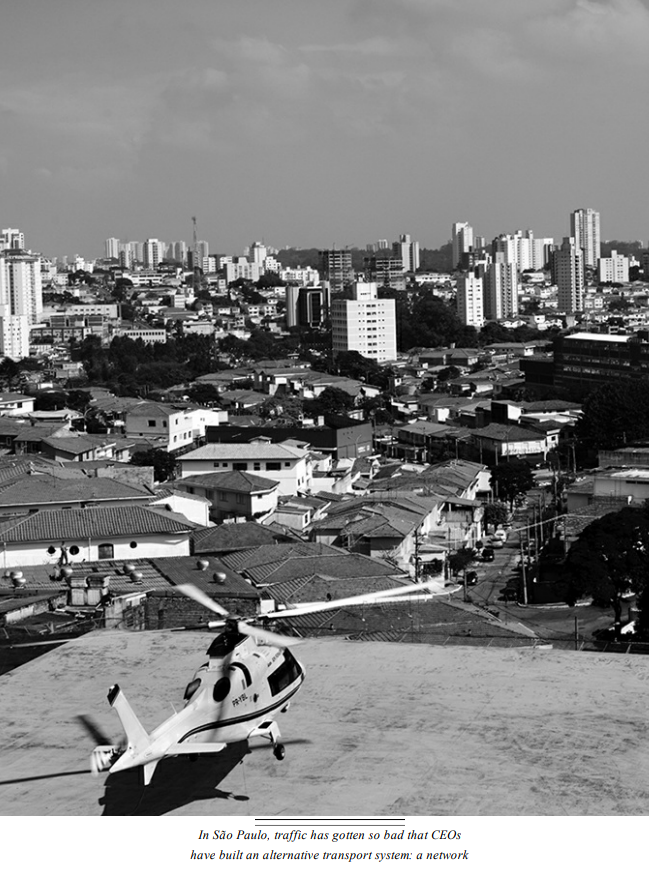Why LATAM (Brazil and Mexico) did not grow as expected ?
About Brazil
On one level Brazil’s failure to invest in roads and factories
can give simple tasks, like moving about the country, a comic-opera quality.
Truckers taking sugar to the seaport in São Paulo routinely wait two to three
days at the gate because of a lack of warehouse space and mechanized cargo
movers inside the port. Those who make it don’t always arrive with a full
load. A former executive of a major U.S. agribusiness says his company
used to transport seeds from the Brazilian hinterlands by truck, but the roads
were so bad that half of the seeds would fall out by the time the truck reached
São Paulo. Scavengers
would follow the truck, and he would later find his seeds on sale in Paraguay.
The flood of foreign money buying up Brazilian assets has
made the currency one of the most expensive in the world, and Brazil one of the
most costly, overhyped
economies.
The average
student in Brazil stays in school for only seven years, the lowest of any
middle-income country; in China, where average income levels are much lower,
the average is eight years.
In São Paulo, traffic has gotten so bad that CEOs have built an alternative
transport system: a network of helipads atop their corporate headquarters
Brazilians like to joke that “God is Brazilian,” and recent years have been
blessed indeed. If there is a divine hand here, it is not necessarily working
on Brazil’s side.
Why Mexico failed?
EVERY NATION HAS ITS BIG TYCOONS, but to a rare degree Mexico is owned by them.
The top-ten business families control almost every industry, from telephones to
media, which allows them to extract high prices without much effort and to
enjoy unusually high profit margins. That explains why Mexico has had one of
the hottest stock markets and one of the most sluggish economies in the emerging world.
Over the last ten years the Mexican stock market increased
by more than 200 percent in dollar terms, while in the United States the
S&P 500 was essentially flat, even though Mexico’s economy did not grow
much faster than that of its northern neighbor. This perverse disconnect
between the stock market and the economy is unusual in the current global
environment. In Mexico it reflects, to a large degree, the power of
oligopolies. While big Mexican companies use their fat profits at home to
become major multinationals, Mexico itself has fallen behind. Cornered markets
mean the oligopolists
(market or industry is dominated by a small number of large sellers) have little incentive to invest
and innovate
The economy has been expanding at an average rate of barely 3 percent for the last
decade, and it barely accelerated through the great boom from 2003 to
2007. With a population of 105 million, Mexico was once the richest country in
Latin America, but in recent years it has been surpassed by its largest
regional rivals. Mexico now has a per capita income of $11,000, lower than both
Brazil’s ($12,000) and Chile’s ($13,000).
The state monopolies became private monopolies, and today
the top companies in telecommunications,
beer, cement, and other industries control 50 to 80 percent of the Mexican
market. They have used the cash generated from captive domestic
consumers to push abroad, giving birth to the Mexican multinational. Today the
Mexico City stock exchange lists the world’s largest telecommunications
company, America Movil; the third-largest cement company, CEMEX; the largest
Coke bottler, Femsa; and the largest tortilla company, Gruma (which makes most
of its money not in Mexico or Latin America but in the United States). About 45 percent of the revenues
of Mexican public companies are generated outside Mexico, mainly
elsewhere in Latin America and in the United States.
Not that Mexican magnates are exactly comfortable. The tycoons who rank among
Mexico’s top-ten billionaires have an average wealth of well over $10 billion,
among the highest in the emerging world, but they don’t necessarily
flaunt it. Like Brazil, South Africa, and other emerging markets where crime
and social resentment against the rich run high, and kidnapping-for-ransom is a
major industry, the super-rich tend to lie low. They ride around in bulletproof
cars, surrounded by bodyguards, while trying hard to make themselves
inconspicuous. Mexican tycoon Carlos Slim is the world’s richest man, but you
wouldn’t know it from his home in Mexico City, a six-bedroom house with a small
swimming pool, all hidden behind high walls.
To a large extent the decades-long drug war in Mexico involves the bad guys
firing on police or on one another, yet there are inevitable spillover
effects. An increasing number of wealthy and entrepreneurial Mexicans are
securing a special class of U.S. visa that allows them to flee Mexico by
investing in American companies. I just heard the story of a businessman who
operates a hospital in Ciudad Juárez, just across the border from El Paso,
Texas, who would not allow his family to visit Colombia for fear of the drug
violence there.
Courtest & Inspiration!
Breakout Nations (2012) book by Ruchir Sharma - Morgan Stanley Investment Banker
Listen to this fantastic talk by Ruchir . its 17 mins. Every second, he reveals new perspectives !



Comments
Post a Comment